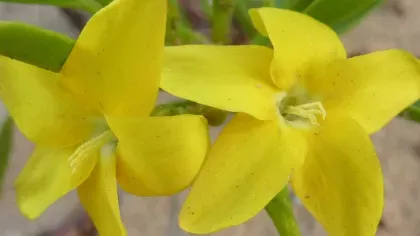Mining Medicinal Molecules
Developing an Artificial Intelligence approach to predict plants that contain bioactive molecules to accelerate drug discovery

Project Leader
Dr Melanie-Jayne Howes (PI)
Team
Dr Oscar Pérez-Escobar
Dr Eve Lucas
Professor Alexandre Antonelli
Dr Adam Richard-Bollans
Dr Eliot Jan-Smith
Edward Straw
Malaria is a life-threatening disease caused by the Plasmodium parasite, which is spread to humans through the bite of infected mosquitoes. In 2022, there were an estimated 249 million malaria cases and 608,000 malaria deaths globally. Therapies for malaria include artemisinin, quinine and various derivatives – antimalarial drugs all inspired by plant chemicals. However, there is an alarming spread of resistance to existing antimalarial drugs, triggering an urgent need to find new antimalarials before existing therapies lose their efficacy.
Plants have provided or inspired the development of numerous pharmaceutical drugs, including those for cancer, heart disease, dementia and malaria. Yet of over 350,000 vascular plant species, the vast majority remain largely unexplored scientifically for drug discovery. Considering this vast number of species, selecting which ones to investigate in the search for new medicines is an immense and challenging task.
This aim of this project is to address this mammoth task by developing and applying Artificial Intelligence (AI) to predict which plant species contain molecules with pharmaceutical potential for malaria.
We will harness unique combinations of plant trait and phylogenetic (evolutionary relationships) data. These data will be integrated into an AI model to predict which plant species contain bioactive molecules to aid drug discovery for malaria. We will test the predicted plant species for their toxicity against Plasmodium parasites, which cause malaria. Using methods in natural product chemistry, we will isolate single molecules from the most potent plant species and elucidate their chemical structures using state-of-the-art analytical chemistry techniques. We will test the isolated molecules for their anti-Plasmodium activity to find new anti-malarial drug leads.
This AI approach offers exciting and innovative opportunities to enhance the prediction of plants containing bioactive molecules to accelerate drug discovery for other diseases too. Furthermore, demonstrating the value of plants to facilitate drug discovery could help incentivise protecting biodiversity for future generations.
- AI approach to predict plants containing bioactive molecules to accelerate drug discovery is developed.
- Plant species containing novel molecules with potent anti-Plasmodium parasite activity are identified.
- New drug leads for malaria from previously unexplored plant groups are discovered.
Assistant Professor Daniele Silvestro, University of Fribourg, Switzerland
Dr James Richardson, University College Cork, Ireland
Professor Colin Wright, University of Bradford, UK
Richard-Bollans A, Aitken C, Antonelli A, Bitencourt C, Goyder D, Lucas E, Ondo I, Pérez-Escobar OA, Pironon S, Richardson JE, Russell D, Silvestro D, Wright CW, Howes M-JR (2023)
Machine learning enhances prediction of plants as potential sources of antimalarials
Frontiers in Plant Science. 14: 1173328.
